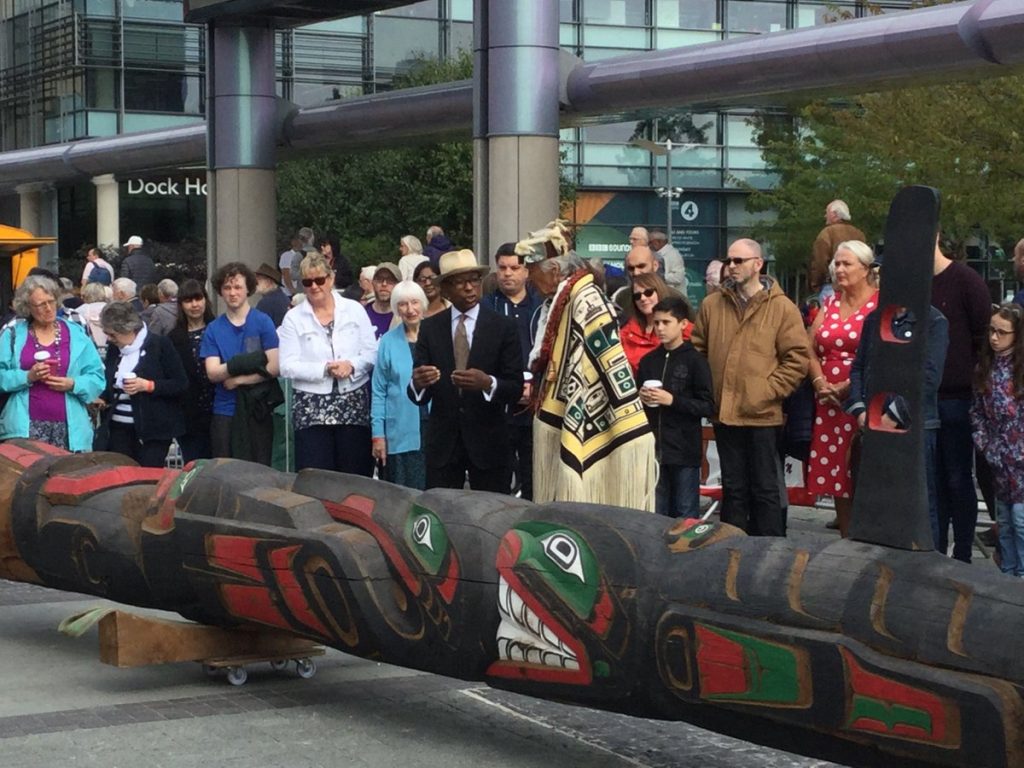Dr Charlie Hall (University of Kent)
Research Administrator, ‘Beyond the Spectacle’
‘Beyond the Spectacle’ has been up and running now for one full year and, for those of us on the team, perhaps the most exciting achievement we have made in that time comes in the form of the sheer volume of relevant material which we have uncovered. Archives, historic press reports, personal papers, oral histories, and many other sources have yielded a vast array of fascinating stories and information about Native North Americans in Britain over the last 500 years. Not only have these discoveries confirmed the importance and urgency of our ongoing research, but they also present interesting challenges about how we can best utilise this material moving forward. However, conventional, primarily historical research only forms one strand of the project, and over the course of the first year, we have also developed a wide-ranging network of contacts, both in the UK and overseas, many of whom are members of Native tribal nations, instigated dynamic arts and outreach activities, and spread the word about our work through a wide variety of means – digital mapping, public events, and this very blog, to name just three. In this post, I will consider the achievements of the project in its first year, and look ahead to what we aim to accomplish in Year Two as well.

One of the primary goals of Year One was to scope out the archival materials which will be relevant to our research. In this, our Research Associates have taken the lead, covering such diverse repositories as Libraries and Archives Canada, The National Archives at Kew, the collections of the Royal Anthropological Institute, and the online British Newspaper Archive. This last source has proven to be an absolute treasure trove, revealing countless stories about Native North Americans who made visits to locations across Britain, and whose interactions with local people ranged from well-received performances of Native cultures to accusations of criminal behaviour. Unpicking the truth behind these often sensationalised tales has become one of the most rewarding elements of our ongoing research. Using collections such as these, we have been able to piece together narratives of many different Native American visitors to the UK, some of which have been documented in other blog-posts, such as that of Nora Gladstone or White Cloud. One issue which has occurred in the course of our research is that of imposters – individuals or groups who falsely claim Native heritage for one reason or another. This is of course deeply problematic and we have worked with Native scholars in order to ascertain the truth behind these claims and to ensure that imposters do not skew our broader understanding of the topic. The phenomenon of imposters will be discussed in greater detail in forthcoming blog posts.
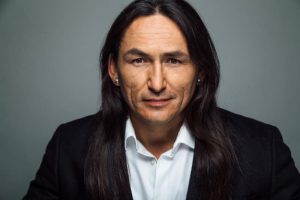
Our research has not only been conducted through poring over diaries and newspaper reports, we have also sought to engage more directly with contemporary Native experiences of travel to, or residence in, Britain. One of the main elements of this is a programme of oral histories, entailing interviews with Native North American individuals who have spent some time living in, or travelling through, Britain. Our interviewees have included the actor Eugene Brave Rock (Kainai), who played the role of Napi in the recent Wonder Woman film, our artist-in-residence, Marla Allison (Laguna Pueblo), the writer and performer, Madeline Sayet (Mohegan), and environmental design consultant, performance artist and model, Sierra Tasi Baker (Coast Salish, Tlingit, Kwakiutl) who visited the UK recently on a grant secured by the project, and advised on a new exhibit at the Horniman Museum. We hope to make many of these interviews available to the public in the coming months, with some forming part of our forthcoming podcast series (more on that below). In all this research, we remain mindful that much of what we document can be considered to be tender or sensitive histories, and it is essential that the subjective and sometimes negative experiences of those communities which are most intimately involved in these stories retain a central place in their telling.
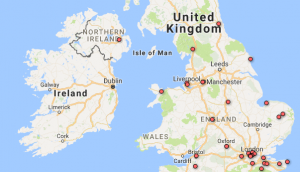
Our approach to research is not only about different ways to gather information, we are also keen to develop various ways to disseminate our findings too. To begin with, team members have spoken at a huge range of academic conferences over the past year, including the European and British Association for American Studies (EBAAS), the Native American Literature Symposium (NALS), the British Association for Canadian Studies (BACS), the Royal Anthropological Institute, and Pacific America. In addition to these conventional approaches, one of our more innovative dissemination techniques has been to utilise digital mapping software to create a visual, geographic depiction of Native North American presence in Britain. Our first ‘taster’ map was launched back in early May, showcasing some of our most interesting stories, but also acting as a call for information. It has always been the intention of the project to utilise crowdsourcing as a way to accumulate data from the broadest possible spectrum of contributors, and we sincerely hope that future maps can contain many more points of interest, thanks to information provided to us by members of the public. If you have any details which you think might be of relevance, please do get in touch on beyondthespectacle@kent.ac.uk.
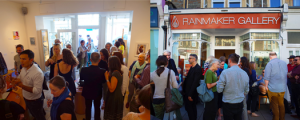
‘Beyond the Spectacle’ does not just intend to document the history of Native North American presence in Britain, it also seeks to facilitate the continuation of this transatlantic cultural exchange moving forward. As a result, a core tenet of the project is a major arts and outreach programme. This began in style in May and June of this year, with our first artist residency. Laguna Pueblo painter and printmaker Marla Allison came to Bristol, where she was hosted by Rainmaker Gallery and the Bristol Museum, and spent a month immersing herself in the British and Bristolian scene and creating exciting new artwork. Marla also wrote two blog-posts for us about her experience as a Native artist generally, and about her time in Britain more specifically. During her stay in Bristol, Marla joined members of the project team in running outreach sessions with local schoolchildren, as well as delivering the keynote at our ‘Indigenous Art in Britain’ symposium, which took place at the University of Bristol on 6 June. Her residency culminated in the fantastic ‘Painter from the Desert’ exhibition at Rainmaker Gallery, the opening of which was so well-attended that enthusiastic art fans were spilling out onto the street.
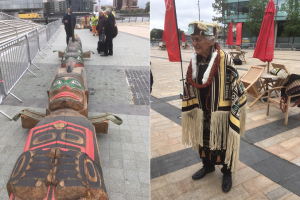
Marla’s residency has not been the project’s only collaboration with Native artists. Our impressive banner image, of Clyde the Big Red Indian, was generously provided to us by Muscogee Creek artist Bobby C. Martin, and now graces our website and all our promotional material. While on face value, Clyde might seem an odd choice for a project which seeks to look beyond the spectacle, his usage actually serves to subvert many of the stereotypes traditionally associated with Native North Americans, especially in Britain. This is perhaps best explained by Bobby himself, in a piece he wrote for our blog to accompany Clyde’s arrival. In another recent and exciting development, the project is now working closely with Salford City Council, Fortis Construction and a group of ‘Namgis carvers on the restoration and re-siting of a totem pole which originally arrived in Salford in the 1960s. When it is re-erected, it will stand as a testament to the connections between Native North American communities and the UK, and to the very relationships which ‘Beyond the Spectacle’ aims to both foster and document.
As many of the achievements mentioned above suggest, one of the project’s greatest successes is the huge network which we have built on both sides of the Atlantic. The work which we are undertaking clearly speaks to a huge range of people, many of whom are very keen to become involved in some way. In the course of our first year, the project has developed relationships with scholars, journalists, educators, museum and heritage professionals, activists, writers, artists, performers, curators, politicians, and researchers, to name just a few, many of whom are members of Native communities, resident in both North America and the UK. This is perhaps most clearly reflected in the composition of our Advisory Board, which has gained two new members in our first year – LeAndra Nephin (Omaha Tribe of Nebraska) and Chris Andersen (Métis) – whose input will no doubt prove invaluable as the project continues to develop. Our aim has always been to take into account the widest possible range of perspectives and interpretations as this is the best way to challenge dominant narratives and ensure fair representation across all our activities. In addition to this network, we have also sought to secure funding for other initiatives which will support our work in studying, facilitating, and highlighting Native North American presence in Britain. In this connection, we have been successful in grant applications to the Canada-UK Foundation, the Canada Council, the Researcher Development Fund at Kent, the Pedagogy Fund at UEA, and in our ongoing collaboration with Salford City Council and Fortis Construction on the Salford Totem Pole project.

Overall then, our first year has been a great success. It is certainly nice that the biggest challenge facing us as we move forward is marshalling all the information we have gathered and activities we are conducting, and choosing which areas to devote our greatest energies towards. Many of our plans for Year Two have already been set in motion and include: a second artist residency, which will see Sonny Assu (Kwakwaka’wakw) spend a month in Norwich next summer; more work on the restoration of the Salford totem pole; the visit of a Cherokee delegation (following in the footsteps of a similar delegation from 1762), who will participate in the Lord Mayor’s Parade in London on New Year’s Day; a series of podcasts, documenting various areas of our research and outreach work; a larger mapping initiative, and particularly the launch of ‘story maps’ which showcase narratives through the use of geographical data and images; the initial development of a database to contain all our research findings and which will become accessible to other scholars and members of the public in due course; close collaboration with museums to make their Native American collections more visible and accessible, particularly to Native American visitors; and, as we approach the centenary of the end of the First World War, the sharing of stories of Native soldiers from the USA and Canada who spent time in Britain between 1914 and 1918.
Altogether, it looks set to be another busy and successful year for the project which will, as ever, be documented thoroughly both on this blog and via our social media channels (Twitter and Facebook). Keep following and, if you have any questions, suggestions or information to share with us, please don’t hesitate to get in touch!

